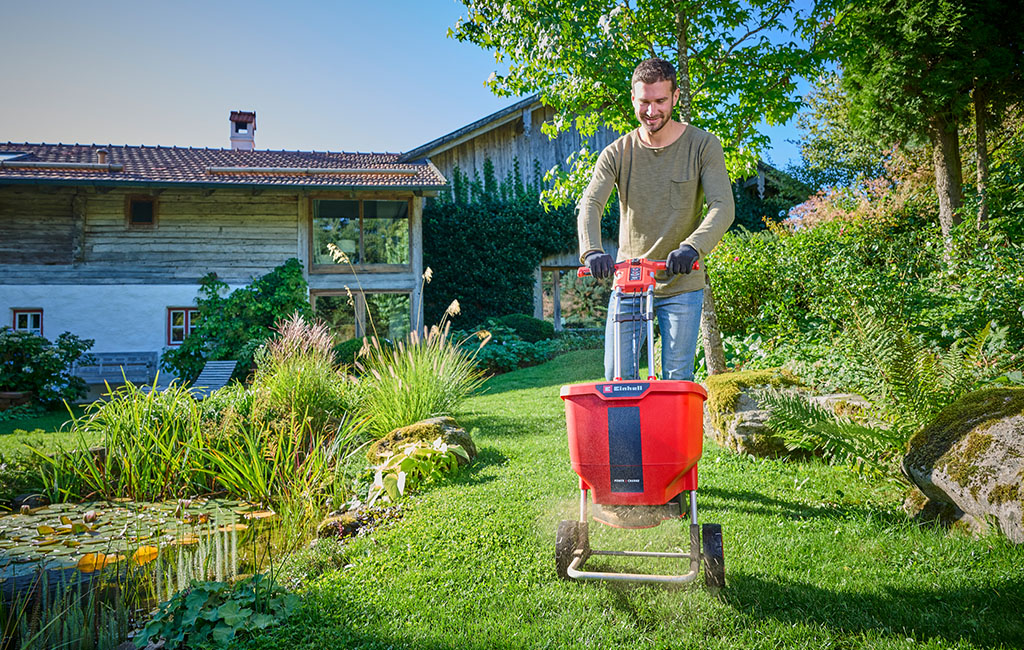Robot lawnmowers in spring: Get your mower ready for the season!
Temperatures are rising, the lawn slowly starts to grow again. Many lawn robot owners are now asking themselves: When should I take the robot lawn mower out of winter hibernation? When is the first mowing necessary? How do I prepare the robot lawnmower for the new gardening season?
In this article, you will learn everything about preparing and adjusting your lawn mower robot, the right time to bring the robot out of winter storage, and what you should consider during the first lawn care after winter.
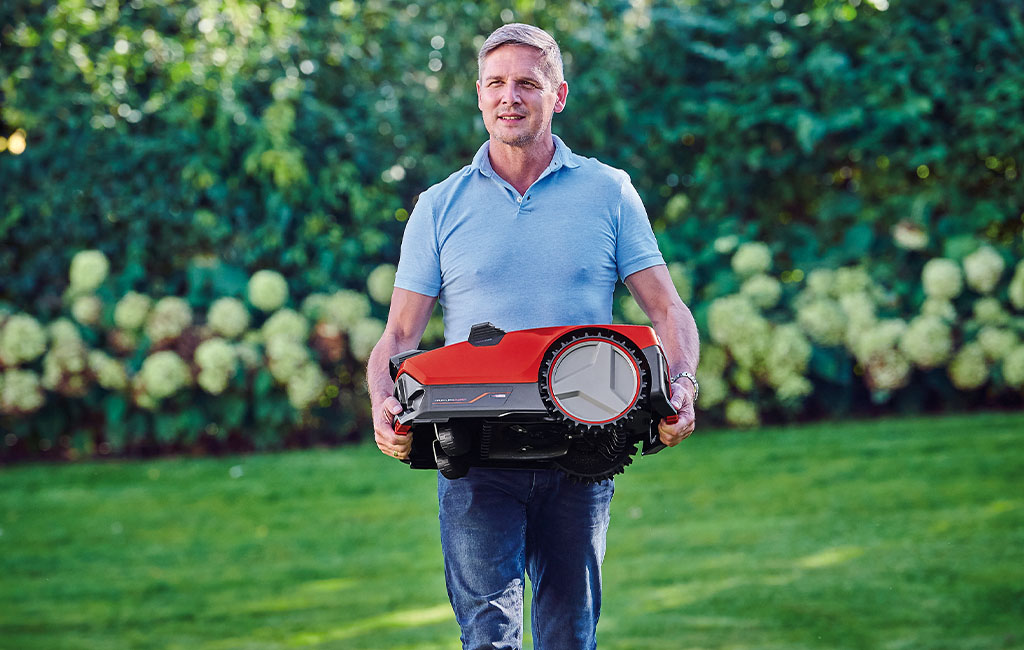
When is the season start for robot lawnmowers?
The lawnmowers winter break ends when the grass is starting to grow again, which of course differs from region to region due to the different weather conditions in each region. If the temperatures are already rising early in spring, the season for lawn mowing will automatically start sooner as well. Grass usually starts subtly growing when the temperature hits at least 6 degrees Celsius, as soon as it hits 10 degrees the real and significant growth starts. A rule of thumb says that the best time for the first cut is between March and early April. From then on, the robot can mow again regularly.
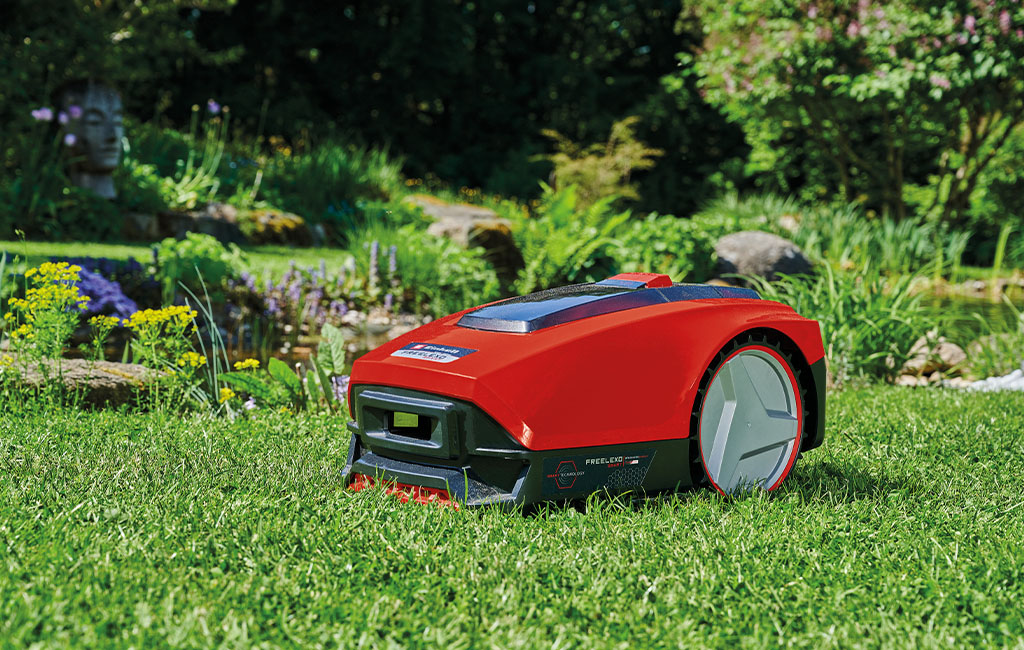
What to look out for when using the robotic lawnmower for the first time in spring?
What cutting height at the beginning of the season?
If the lawn is already higher than the maximum cutting height of your robotic lawnmower, you should first mow the lawn area with a conventional lawn mower. But even if the robot could handle the grass height, you should always follow these two rules:
- One third rule for mowing lawns:
Generally, grass should always be trimmed by only one-third of its length. Cutting too much can damage the roots, delaying the recovery of the lawn and resumption of its growth. During dry spells, excessive cutting can cause the lawn to burn and turn brown. Therefore, approach the desired grass length gradually, cut by cut. - Mulching principle of the robot mower
A robot lawn mower is also always a mulching mower. This means that, unlike other lawn mowers, the grass clippings remain on the lawn surface after mowing. The grass remnants serve as fertilizer, heat protection, and protection against evaporation for the lawn. However, if the grass was too tall and the clippings consist of longer grass blades, it can create a dense layer of mulch. This results in the blades receiving too little light, leading to matting or the onset of lawn diseases. Therefore, ensure a regular mowing schedule, so that your lawn mower robot mows more frequently, thus cutting less grass each time.
Spring check for the robotic lawnmower
Before mowing the lawn for the first time in March, you should take time to check the robot and its functions. If you didn't clean the lawnmower before winterizing it in the fall, you should do it now at the latest. Dirt on the contact surfaces can, for example, result in the mower not being loaded correctly. Additionally, the charging station should also be cleared of any dried grass or other dirt from the previous mowing season. Take your time and check the functionality of all elements before starting:
- Are the knives still sharp?
- Is there a firmware update available for your robot model? You'll receive this information via email or through the Einhell Connect App. You can find the latest firmware version for download and all tips on the firmware update page.
- Is there an update for the app that controls the robot? You can check this in the App Store on your smartphone.
- Is there a signal between the charging station and the robot mower? Does the robotic lawnmower find its way back to the charging station on its own?
- Are the data and time settings still correct?
- Is the schedule for the robot still up to date?
- Is the battery fully charged and ready to be used?
- Is the boundary wire still optimally laid? If there is any damage to it, do you have any connecting clamps for the boundary wire?
- Are the fastening hooks with the cable firmly anchored in the floor?
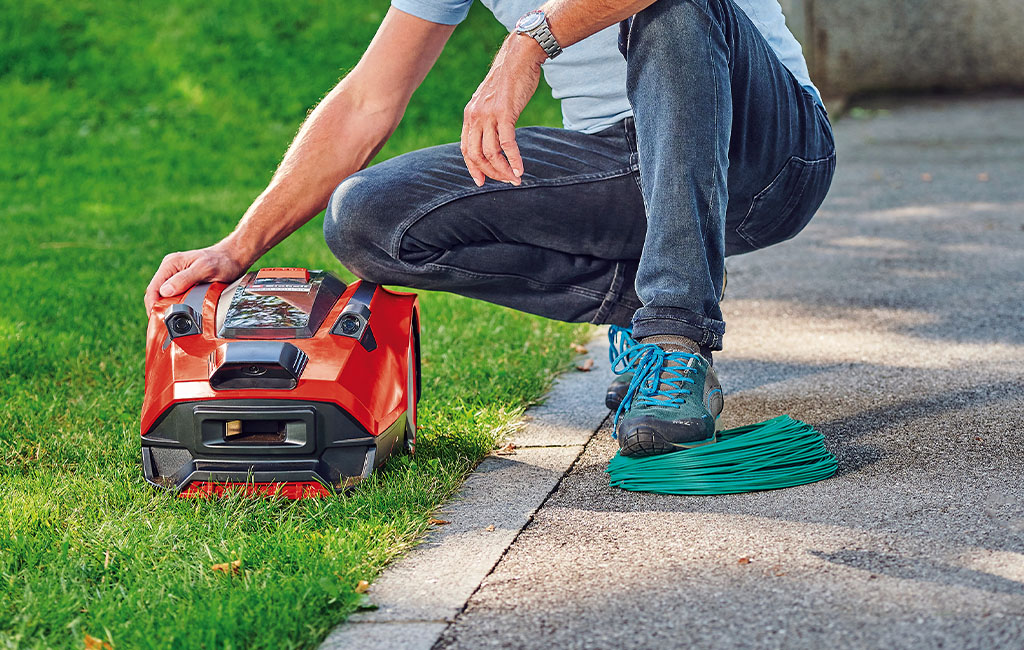
Repair the boundary wire
If there are new obstacles in your garden, for example because you have planted a tree, the boundary wire must be adapted to the new conditions. In this service video we will show you all the tips for laying the wire and how you can repair a broken cable yourself:


Tip: Robot Mower Accessories
Are the robot lawn mower blades dull or are you missing connectors for repairing your laid wire? No problem! Here you'll find all the robot mower accessories for maintenance, care, and repair, as well as complementary accessories like a robot lawn mower garage. This way, your lawn robot is always well-equipped!
Season start for the FREELEXO CAM
To bring your FREELEXO CAM out of its winter break and get it ready to go, we recommend that you delete the stored reference values for the mowing limits in addition to the points mentioned above. This will allow you to send the mower through your garden for a new initialisation run. If you have made changes to your garden during the mowing pause, such as removing or adding obstacles like trees, new paths or garden sheds, it is advisable to delete the robotic lawnmower's mapping. This allows it to create a new map of your lawn during operation. This way, your FREELEXO CAM is optimally prepared for its first use after the winter break.
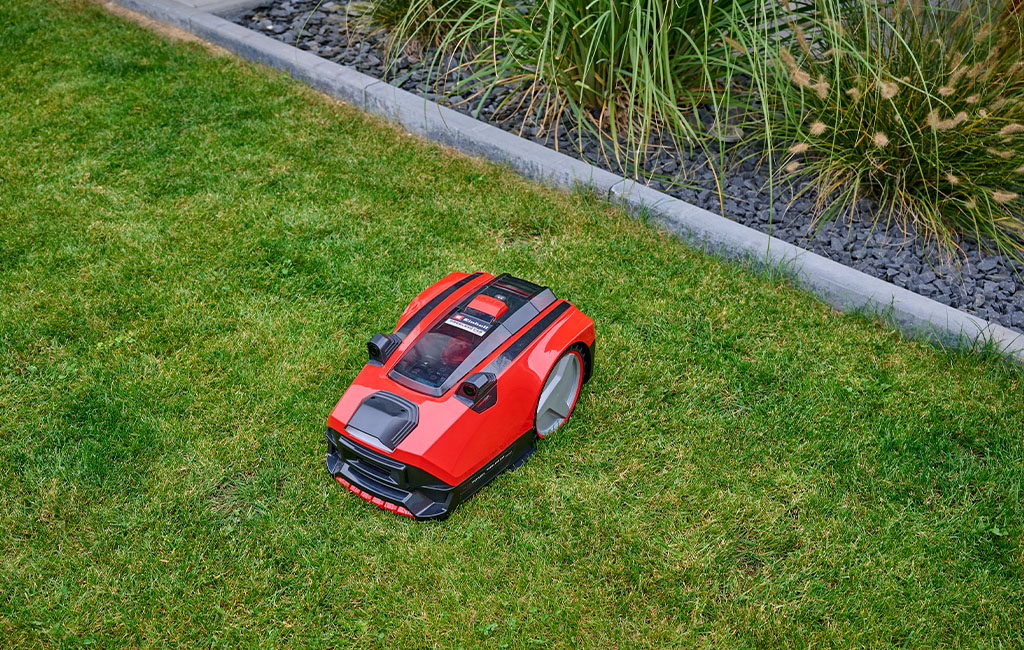
Garden Check before the robotic lawnmower’s first mow of the season
Before the robotic lawnmower’s first mow of the season, the garden should also checked before the device can regularly draw circles on the lawn.
- Have all obstacles such as molehills, toys, garden tools etc. been removed from the lawn?
- Is the boundary wire laid so that sensitive puddles or dangerous places as the pond are avoided? For the FREELEXO CAM: Are all obstacles and boundaries in the garden clearly recognisable, e.g. have boundary stones been cleared of overgrown plants?
- Have all old leaves, branches and fallen fruit, etc. been removed?
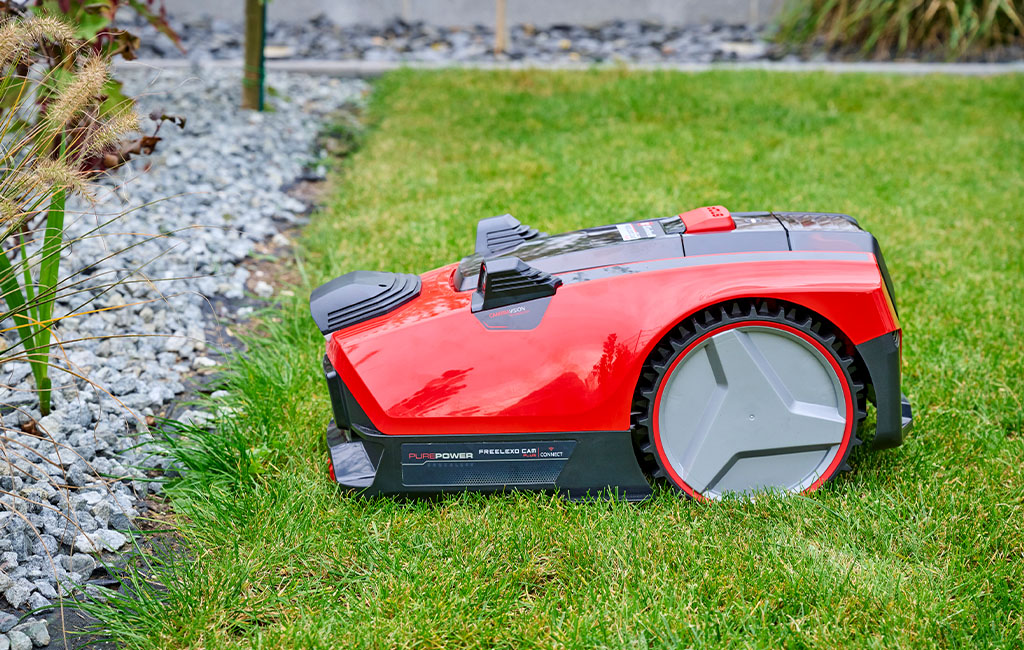
Robot mowers and the right lawn care
Scarifying and aerating despite a robotic lawnmower?
Proper lawn care also includes scarifying. Experience shows that in gardens that are maintained by a robotic lawnmower, scarifying tends to be required less frequently. Regular mowing and the mulch cutting system of a robot lawn mower ensures healthy growth and reduces matting. If moss and weeds still spoil your lawn, you can remove them with a scarifier. In our article on scarifying, we explain what you should consider with scarifying. To ensure that your lawn gets enough nutrients during the gardening season, you can support it by regularly aerating it. You can find out more about this in our blog post on aerating the lawn.
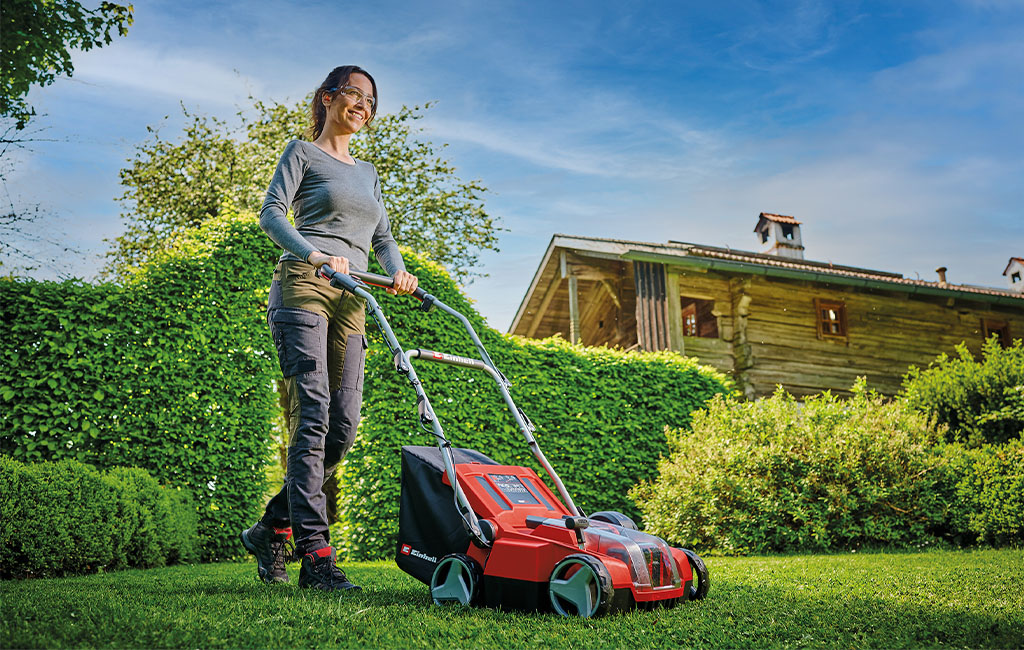
Fertilizing despite the robot lawn mower?
Similar to scarifying, lawns that use robots usually need fertilizers less often as the grass clippings fall back on the turf and serve as a natural mulch. The microorganisms in the soil then convert the grass clippings into valuable nutrients. However, after winter, your lawn may need additional fertilizer, which should be provided in the form of fertilizer. However, be careful as over fertilization can burn the lawn! A spreader or spreader cart can help with even distribution of fertilizer over large areas.





